Uncover the Veil of Ancient Silk Road
Ni Hao! Welcome to Shanghai, the biggest metropolis of China!
Upon arrival, be greeted by our tour guide in the Arrival Hall who is holding a sign with your name. Before transferring to your hotel, you will firstly be taken to experience one of the fastest trains in the world - Shanghai Maglev Train (Optional).
Started operation at 2003, the Shanghai Maglev Train is the first commercially operated high-speed magnetic levitation line in the world. Running at a speed of 431km per hour, the Shanghai Maglev Train takes only 8 minutes to transfer from Pudong International Airport to Longyang Road Station in the central downtown of Shanghai. Passengers hardly can hear any noise, and feel any jolt, because the maglev trains run with touching the railway line. The facilities inside the trains are very modern, clean and comfortable. (Note: The Maglev Train only operates between Shanghai Pudong International Airport and Longyang Road Station from 06:45 AM to 21:42 PM )
Optional Evening Activity: Enjoy an entertaining and breathtaking Acrobatic Show at Shanghai Circus World or other acrobatic theatres (usually performs during 19:30~21:00).
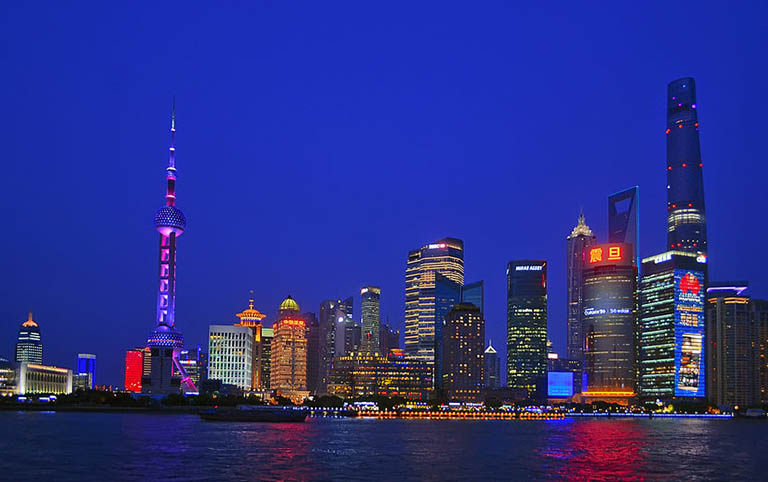 Splendid Shanghai Night View
Splendid Shanghai Night View
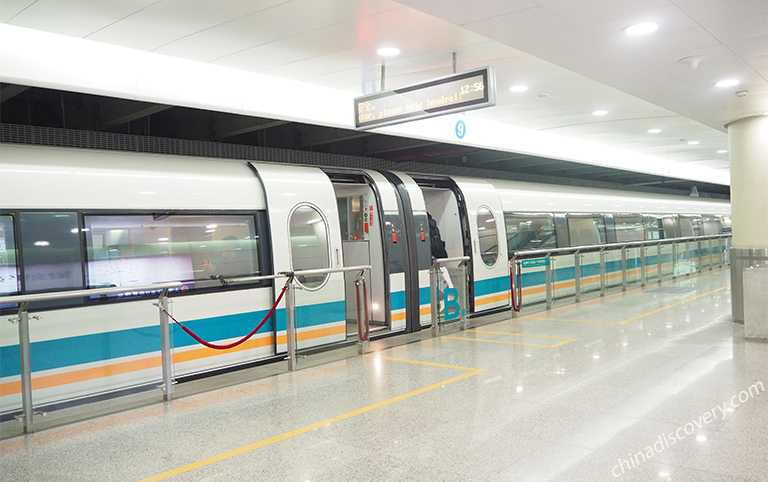 Feel the Highest Speed of 431 km/h of Shanghai Maglev Train
Feel the Highest Speed of 431 km/h of Shanghai Maglev Train
You will take a full day of sightseeing to explore both the past and present of Shanghai. Your first stop is Shanghai Museum, one of the Best Four Museums in China. This modern museum, with a round top and a square base which symbolizing the ancient Chinese perception of the world as "round sky, square earth", has collected many international-standard exhibits of bronzes, paintings, calligraphy, sculpture, ceramics, jade from more than 5,000 years ago to the Qing dynasty.
Then, take an interesting visit to Yu Garden, a shining star among all the ancient Chinese gardens in Jiangnan. This garden fully embodies the traditional design of Chinese architecture with jagged pavilions with elegant decorations, glittering pools with roving fish, and pine trees sprouting to the sky, all designed to refresh your mood and spirit. Adjacent to the garden is the Yuyuan Bazaar where you can savor tasteful local snacks and explore elaborate traditional Chinese handicrafts and art works. Next you will drive several kilometers to enjoy a panoramic view of the modern face of Shanghai from the 100th floor (474m) of “the Eye of Shanghai” - Shanghai World Financial Center.
You will then be transferred to another popular landmark of Shanghai, Nanjing Road, a shopping paradise as well as a great place to take a wonderful walk to experience the modern atmosphere of the City. Lastly, you will stop at the Bund, originally a simple towpath for transporting goods but now transformed into a feverish trading district. You will stroll along the Bund, seeing and feeling the perfect fusion of Chinese and Western cultures while at the same time taking in the stunning Shanghai skyline with your own eyes!
Optional activities: Take a relaxing Huangpu River night cruise to see the city’s most significant edifices and streets sparkling under the atmospheric cover of darkness (about 50 minutes).
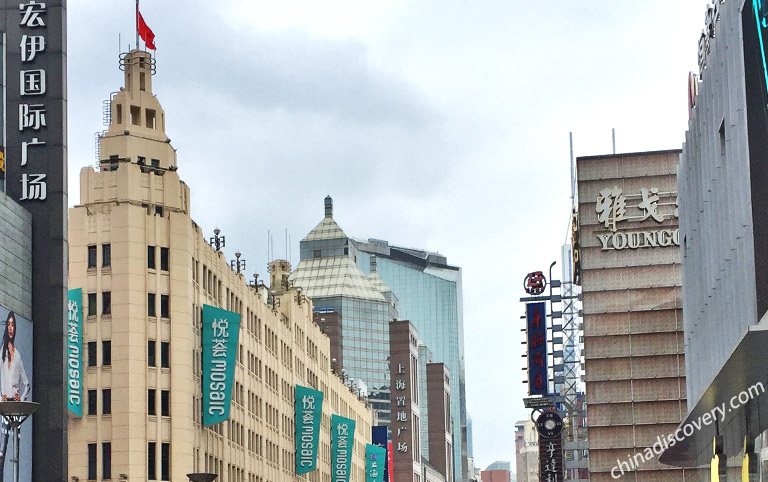 Enjoy Shopping on Fashion Nanjing Road
Enjoy Shopping on Fashion Nanjing Road
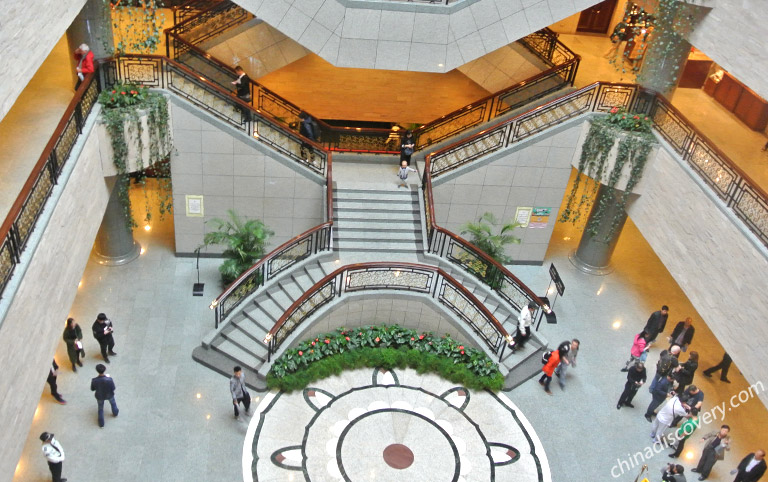 Shanghai Museum - One of the Best Four Museums in China
Shanghai Museum - One of the Best Four Museums in China
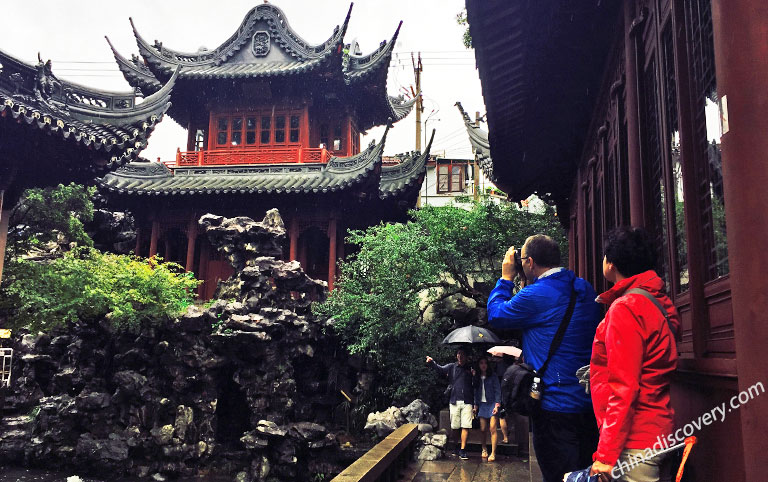 The Tranquil Yu Garden with Classical Chinese Style to Relax
The Tranquil Yu Garden with Classical Chinese Style to Relax
After breakfast, your guide and driver will pick you up at your hotel. First, you’ll pay a wonderful visit to Jade Buddha Temple, the site of the largest Jade Buddha in the world and numerous religious artifacts, ancient statues and Buddhist scriptures. This peaceful kingdom of Buddhism hidden among modern blocks and dominating mansions is a great place for a nice break in this very busy city.
Next, you’ll be transferred to Tianzifang which is touristic arts and crafts enclave that has developed from a renovated traditional residential area in the French Concession area of Shanghai. It is the typical tourist attraction to appreciate the preservation of local Shikumen architecture. In this place full of rich flavor of life, you can leisurely stroll along the clean old alleys to watch the daily life of local Shanghai people, savor a cup of drink at the open-air café, and find some interesting things in the novel shops to feel the international feature mixed with real Shanghai culture.
Lastly, take a flight to Xian (about 2hrs and 45mins), the ancient heart of China. Upon your arrival, be transferred to your hotel in Xian downtown in a private vehicle. The rest of today is free for you to explore the ancient city on your own.
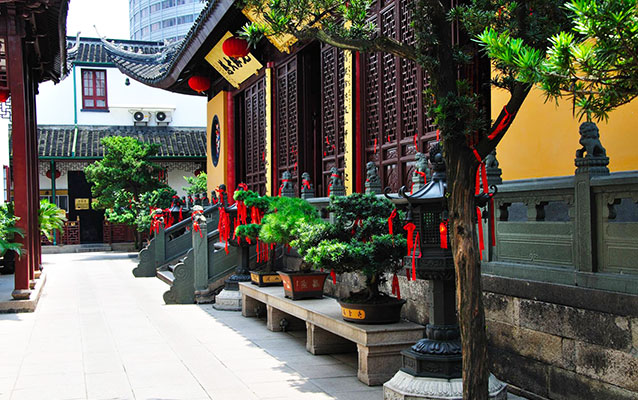 Peaceful Jade Buddha Temple in Shanghai City
Peaceful Jade Buddha Temple in Shanghai City
After breakfast, drive about 40 km to discover one of the greatest man-made wonders in the world – the Terracotta Warriors and Horses, built by the first emperor of China Qin Shihuang to protect him in his afterlife. Over 8,000 life-size warriors, horses and chariots, buried in 3 pits for more than 2,000 years until uncovered by a local farmer in 1974, form an ancient military army with complete battle units of infantry, cavalry, etc. Standing in front of these figures, one can’t help being amazed not only by the ambition of Emperor Qin Shihuang but also by the fabulous artistic skills of ancient Chinese artisans.
After lunch, return to Xian to take a wonderful stroll on the Ancient City Wall, the largest and best-preserved ancient city wall in China. Enjoy panoramic views of modern Xian and walk leisurely on the well-maintained city wall which is 12 meters high and 18 meters wide with a total circle of nearly 14 kilometers. Leave the City Wall, then go to wander leisurely around bustling and lively Muslim Quarter, a place where you can try different local snacks and explore Muslim culture. Don't miss the Great Mosque of Xian which is a fusion of Chinese culture and Islamic culture, a sacred religious site with huge ancient architectural complex, also a surprisingly quiet land away from the bustling Muslim streets.
Optional activities: 1). Take a relaxing cycling on the Ancient City Wall; 2). Enjoy a wonderful Tang Palace Dance Show (usually from 8pm to 9pm) after a hearty dumpling dinner at a local restaurant.
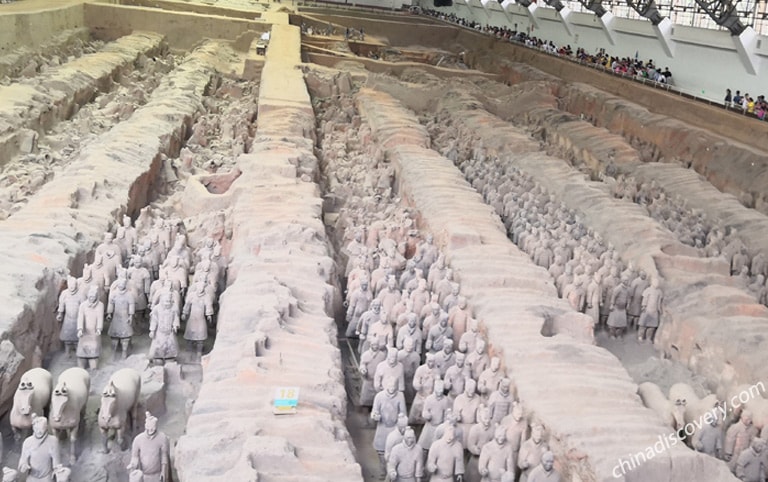 Amazing Terracotta Warriors with 2000 Years History
Amazing Terracotta Warriors with 2000 Years History
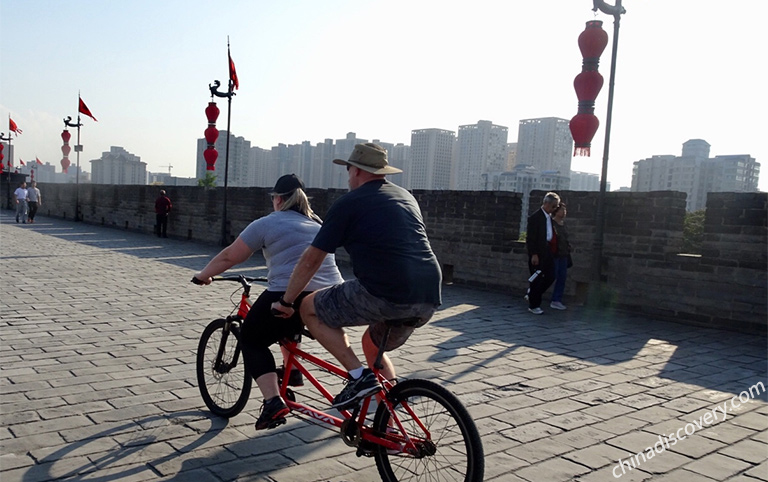 Our customers enjoyed biking on Ancient City Wall
Our customers enjoyed biking on Ancient City Wall
After breakfast, head to Da Cien Temple, a famous Buddhist sutra translation site during the Tang Dynasty. Big Wild Goose Pagoda is the most famous building in the temple. The pagoda, rising to a height of 64.5 meters, was built by the famous Buddhist master Xuanzang to preserve classic scriptures he bought back from India during the early Tang Dynasty. Xuanzang was the prototype character for Tang Seng in the famous Chinese novel “Journey to the West”. (Note: It costs an extra 30 RMB if you want to climb up the Big Wild Goose Pagoda.)
Next is an educational visit to the Shaanxi History Museum where you can ramble in the modern exhibition halls to appreciate historic relics such as porcelains, paintings, and currencies dating from the Zhou to the Tang dynastic periods (1100BC to 907 AD). (Note: Shaanxi History Museum may be replaced with other activity or attraction because of crowding tourists during July ~ early September and China’s National Day during Oct.1-Oct.7. You may check details with your travel consultant.)
After the visit, your guide escorts you to the airport to take a two and a half hours' flight to Zhangye. After arrival, met by local tour guide and transferred to check in your hotel in Zhangye.
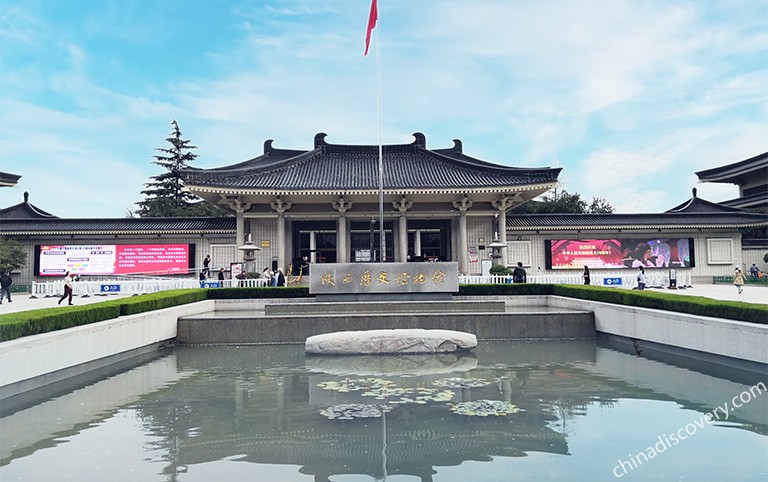 Our customers' group visited Xian Shaanxi History Museum
Our customers' group visited Xian Shaanxi History Museum
Zhangye is famous for its unparalleled Danxia Landforms which is a spectacular petrographic geomorphology landscape formed from red-colored sand stones and conglomerates. Among all the Danxia places in Zhangye, Binggou Danxia Landform Scenery Area and Zhangye Danxia Landform Geographical Park (Linze Danxia) have most significant Danxia landscapes. Today you will go to explore both of them.
After breakfast, you will go to visit Binggou Danxia Landform first which is about 1 hour's driving from Zhangye downtown. Even though just being visited by fewer travelers, Binggou Danxia Landform Scenery Area has its own featured charms. If the Linze Danxia Scenery is a visual feast of colors, then the Binggou Danxia is a great joy to find how the Mother Nature became a sculptor who sculptured the mountains to amazing different shapes, like grand palaces, long corridors, giant pillars, etc. You will hike leisurely about 2 hours to look the spectacular landform closely.
In the afternoon, drive about an hour to visit the Zhangye Danxia Landform Geographical Park which was formed in the pre-Jurassic Age. Thousands of mountains and stiffs stretch like the colorful sunset glow. The barren mountains are covered by a red grit rock stratum. At the same time, some surfaces of mountains appear other colors, such as white, yellow, etc, and form many irregular lines and blocks looking like some abstract oil paintings. There are five viewing decks for you to watch and shoot. You will visit one by one, and will be transferred by park buses from one deck to another.
You won't miss the precious opportunity to enjoy the amazing sunset. Viewing Deck No. 4 is the best location to take sunset of the Danxia Landform. It's better to get there earlier to occupy a good location. After sunset, drive back to Zhangye downtown for accommodation.
Useful Tips: 1) Pack with sun creams, sun glasses, protective clothing and hat to protect from strong sunlight in summer; 2) sunset is the best time for taking photos which happen around 19:00~20:00 in summer and 18:00~19:00 in winter.
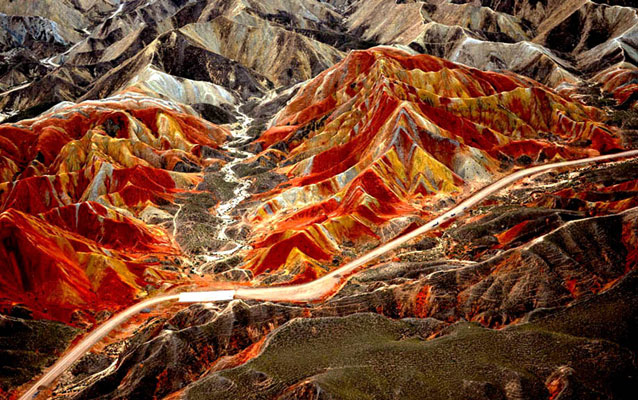 Zhangye Danxia Landform Views After Rain
Zhangye Danxia Landform Views After Rain
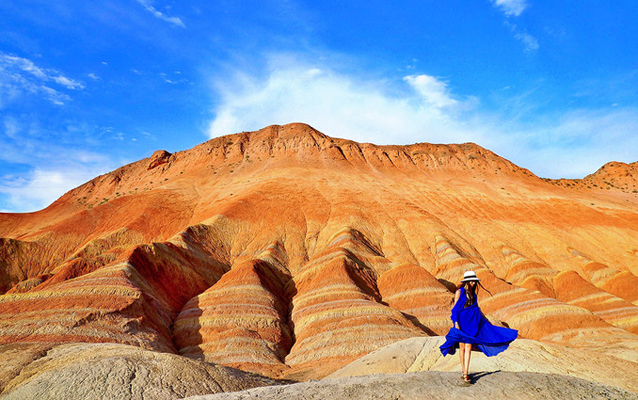 Zhangye Danxia Landform Photography
Zhangye Danxia Landform Photography
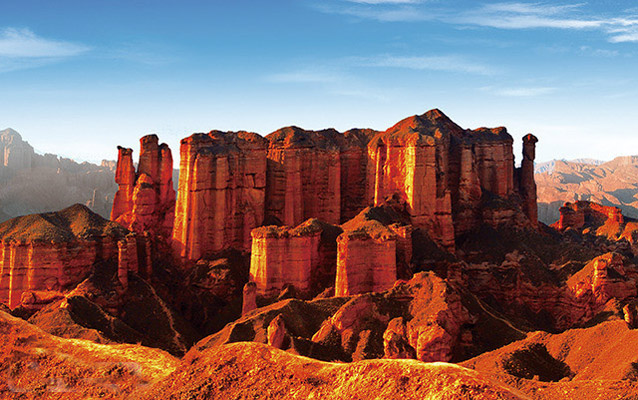 Binggou Danxia Landform
Binggou Danxia Landform
After breakfast, you will go to visit the Giant Buddha Temple which is famous for having the largest indoor sleeping Buddha in Asia. This temple is a large complex with regal arrangements built in Xixia Dynasty(1098), and keeps many precious Buddhist scriptures and wall paintings. Its famous treasure is the Sleeping Buddha which is the centrally seated, symmetric buildings situate along the sides. The Buddha statue was carved by woods with a length of 34.5 meters, telling the story of Buddha’s Nirvana. His ears are as big as the space in which 4 adults can sit side by side.
After visit the Buddha Temple, drive about 220 km (2.5hrs) to Jiayuguan City and check in your hotel. Then you will go to visit "the First and Greatest Pass under Heaven", also the westernmost starting point of Great Wall of Ming Dynasty - Jiayuguan Pass. Start your exploration with an education visit to the Great Wall Museum to learn some interesting facts about both the Jiayuguan Fort and Great Wall, including history, old photos, relics, etc. Then enter the gate to explore the grandiose Jiayuguan Fort. It is a complex of towers, city walls and other military buildings covering more than 25,000 square meters. The city wall is nearly 11 meters high, and comprises an outer and inner wall. There are two large gates standing at the east and the west of the inner wall. Walkways lead to the top of the wall, allowing horses to climb up the wall.
If time allows and you are interested, you can take an optional visit to the Xuanbi Great Wall (Overhanging Wall) which is about 18 km away from the Fort. The walls were built on lofty cliffs with incredibly large gradient looking like an overhanging cantilever. Climbing up to higher gives you excellent views of the surrounding land and mountains.
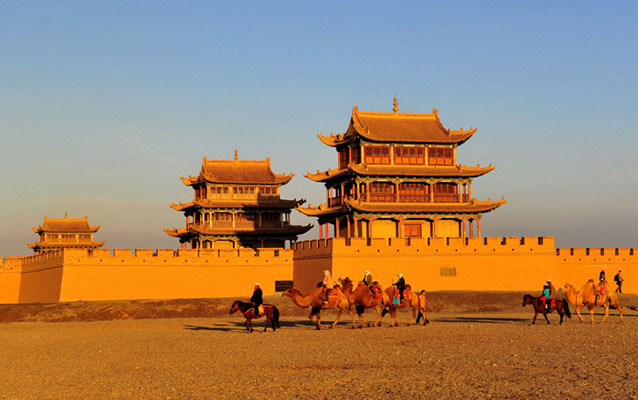 Jiayuguan Fort
Jiayuguan Fort
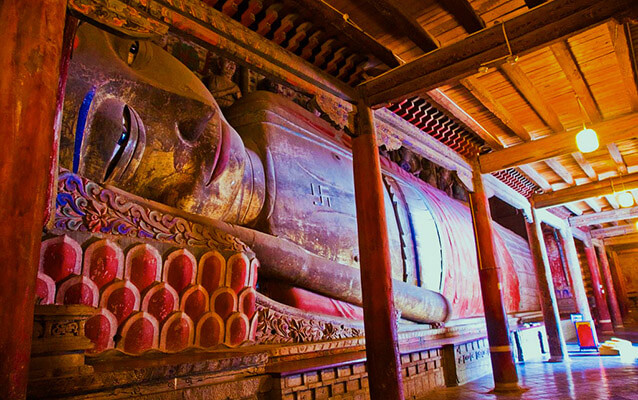 Giant Buddha Temple
Giant Buddha Temple
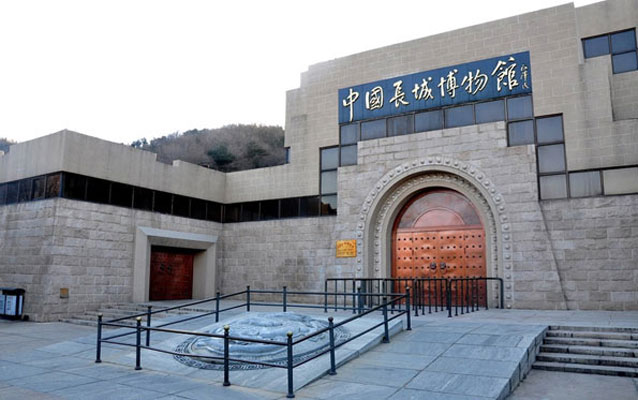 Great Wall Museum
Great Wall Museum
Today you will drive to Dunhuang from Jiayuguan in the early morning. On route, visit the Yulin Grottoes. The forty-two caves house some 250 polychrome statues and 4,200 square meters of wall paintings, dating from the Tang Dynasty to the Yuan Dynasty (seventh to fourteenth centuries).
In the evening, you can go out to go for a walk in the Shazhou Night Market on your own where you can try some local food, relax in a drinking bar, or buy some interesting handcrafts, etc.
Stay overnight in Dunhuang.
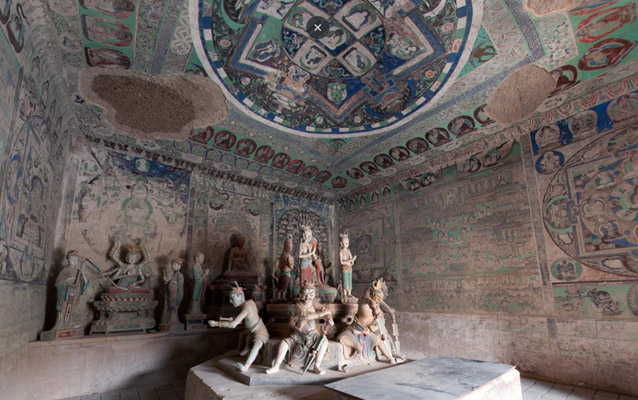 Yulin Grottoes (No. 3 Cave)
Yulin Grottoes (No. 3 Cave)
After breakfast, you will be taken to explore the remote wild Gobi desert landscape as well as several legendary historical sites. Drive westwards about 100 km, you will firstly arrive at Yumen Pass (Jade Gate Pass) which used to be a military defensive pass as well as an important border for international trading along the ancient Silk Road. It is said that the jade wares from West were imported to China through this gate, which is how the name Yumen was given. About 5 km from Yumen Pass is the Ruin of Great Wall of Han Dynasty which was built to fight against Xiongnu in the ancient time. Keep driving more 80 km, you will get to Yardang National Geologic Park. It is also called Devil City in that you will hear the sound just like the devil screaming when the strong wind goes through the desert. The park is featured Yardang landforms in distinct shapes like Mongolian Bao, Stone Bird, Peacock and others. Make full use of your imagination, you may find some rocks with some miniatures similar to famed architectures, like the Potala Palace in Tibet, Heaven Temple in Beijing or something else.
Leave Yardang National Geologic Park, and drive along the coming way back to Dunhuang. The following attraction is the Echoing Sand Mountains (Mingshashan). It is said, in the sunny days, the sand mountains echo like Orchestra music even if there is no wind. If you slide from the sand mountains, you can hear the echoing sound clearly. Your last thing to do for today is the Crescent Lake. Surrounded by the Echoing Sand Mountains, Crescent Lake is a beautiful oasis with some well decorated traditional Chinese architecture, some trees and flowers and a lake that has never dried up and shapes like a crescent moon.
Nightlife Ideas: 1) Go out to go for a walk in the Shazhou Night Market where you can try some local food, relax in a drinking bar, or buy some interesting handcrafts, etc. 2) Enjoy the fascinating Silk Road Show - Silk Road Flower Rain which is a relaxing feast of unparalleled visual beauty with impressively elaborate dances performed by professional dancers wearing stunning costumes and an incredible set design.
Useful Tips: 1) Pack some food and water for the long driving on the desert; 2) get fully prepared for the strong sunlight and high temperatures in the daytime.
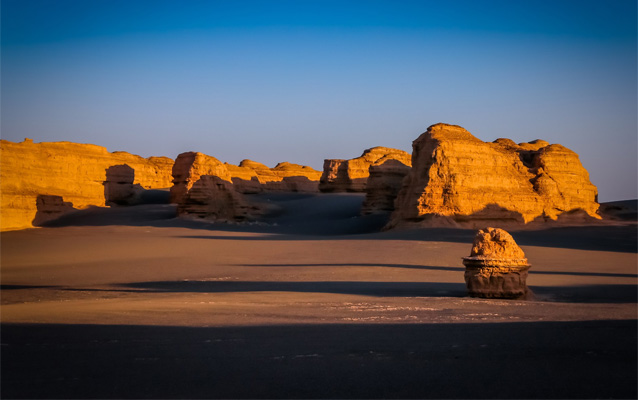 Beautiful Yardang National Geopark Sunset in June
Beautiful Yardang National Geopark Sunset in June
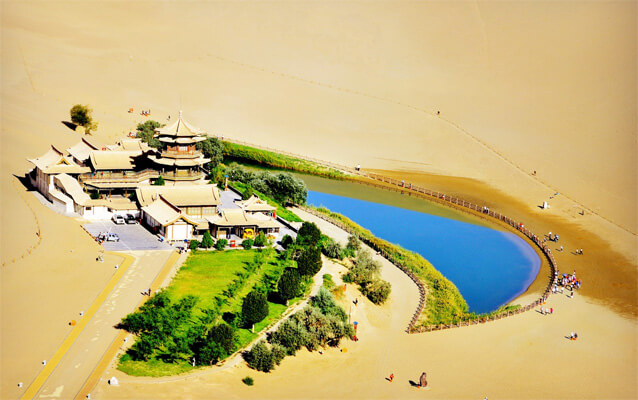 Crescent Lake Never Dry Up
Crescent Lake Never Dry Up
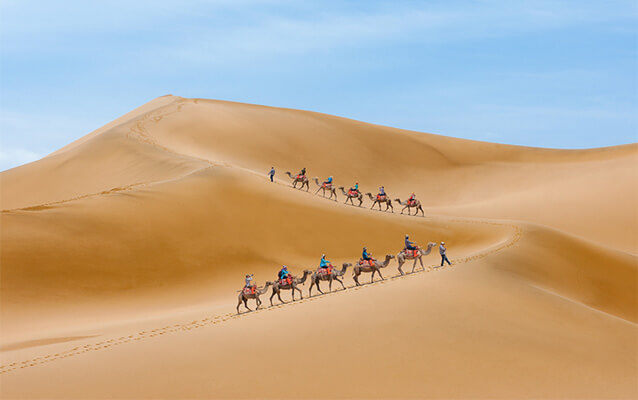 Riding Camel at Mingshashan (Echoing Sand Mountains)
Riding Camel at Mingshashan (Echoing Sand Mountains)
After breakfast, drive about 10 km from the Dunhuang city to visit the newly opened Mogao Grottoes Digital Exhibition Center before go to Mogao Grottoes. You will watch two short but well-produced educational documentary movies that introduce the history, arts, and other facts about Mogao Grottoes. After the movies, take the interzonal bus to Mogao Grottoes.
Mogao Grottoes is famed as the "Louvre of the East", which is outstanding for its exquisite mural paintings and statues. There are now 492 grottoes in which about 45000 square meters long mural paintings and 2100 colorfully painted statues from which you can trace the development of Chinese art over 1600 years from one dynasty to the next because each dynasty built own caves to record its own features. There are about 40 common caves opened to the public. In the tourist area, you will be divided into groups by different tour guides who will accompany you to visit the caves (usually 7~8 caves during April~November and 12 caves during December~March) with great introduction. After that, if you want to visit more other caves, you can do it by yourselves or follow other tour guides. Besides, there are 10 special caves (with extra fees) available for your extensive visit.
The rest of today is free for you to catch your flight/train to the next destination. Your Dunhuang Silk Road tour ends!
Useful Tips:
1. During peak seasons (May to October), there are usually a lot of visitors to Mogao Caves, so it is recommended to make reservation in advance for at least 7 days. 2. If you want to see the Special Caves (excluded in the regular visit, and only open for limited individual visitors or small groups with reservations), you can contact our travel consultants or your tour guide to arrange for you, but you have to pay the extra admission fee for each cave. 3. It is not allowed to take photos inside grottoes.
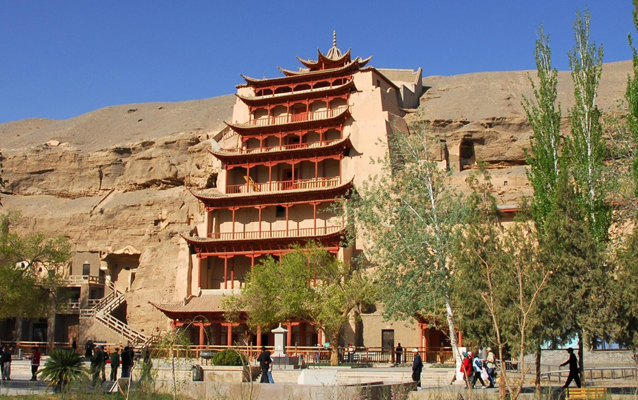 Mogao Grottoes
Mogao Grottoes
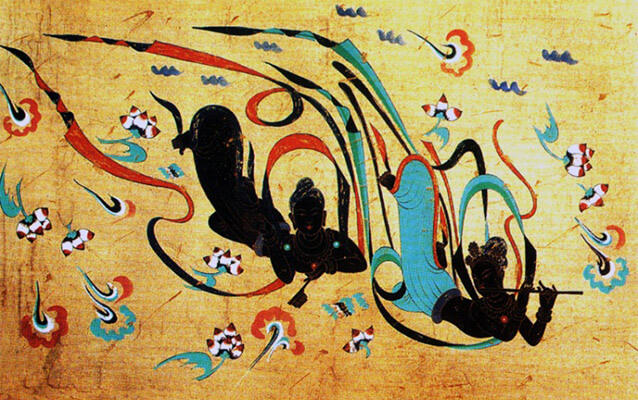 Mogao Grottoes Feitian (Flying Apsaras)
Mogao Grottoes Feitian (Flying Apsaras)
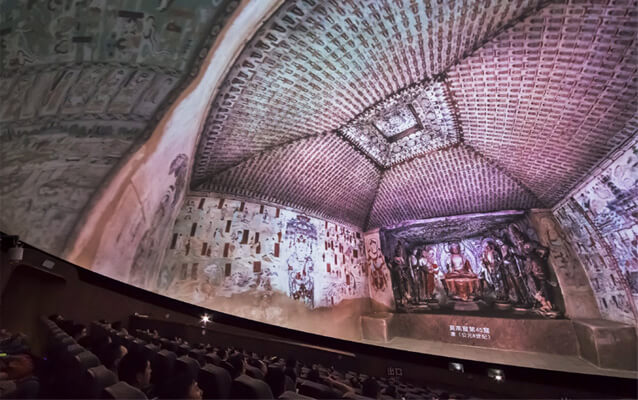 Watch a documentary film in the Dome Theater of Mogao Grottoes Digital Exhibition Center
Watch a documentary film in the Dome Theater of Mogao Grottoes Digital Exhibition Center
Beijing, the 'forbidden' city, now is open to the world!
As the capital city of China for more than eight-hundred years, Beijing possesses rich cultural deposits of China. You will need at least 3 days to explore its best highlights. Here is the plan - Day 1 is for you to visit the imperial historical sites, including Tiananmen Square, Forbidden City and Summer Palace; Day 2 is to hike the magnificent Great Wall while Day 3 is for you to have a half-day visiting of the Temple of Heaven,local Hutongs, and depart from the city.
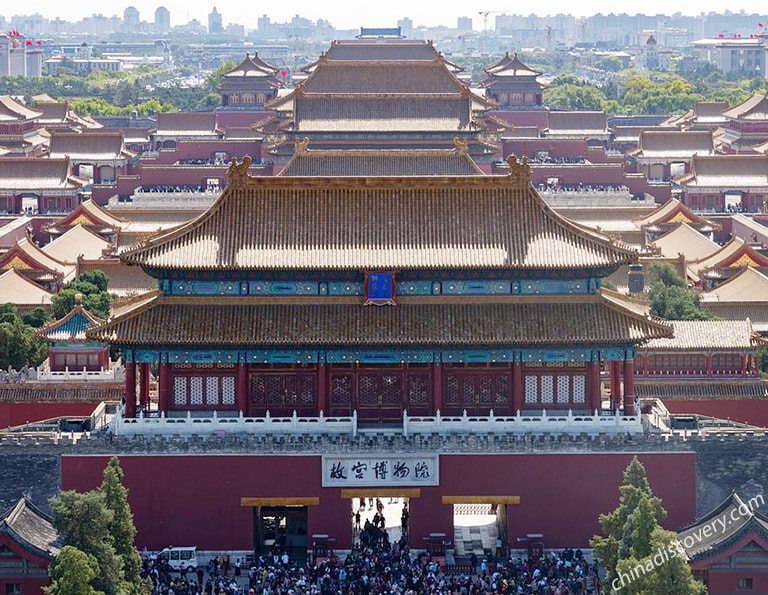
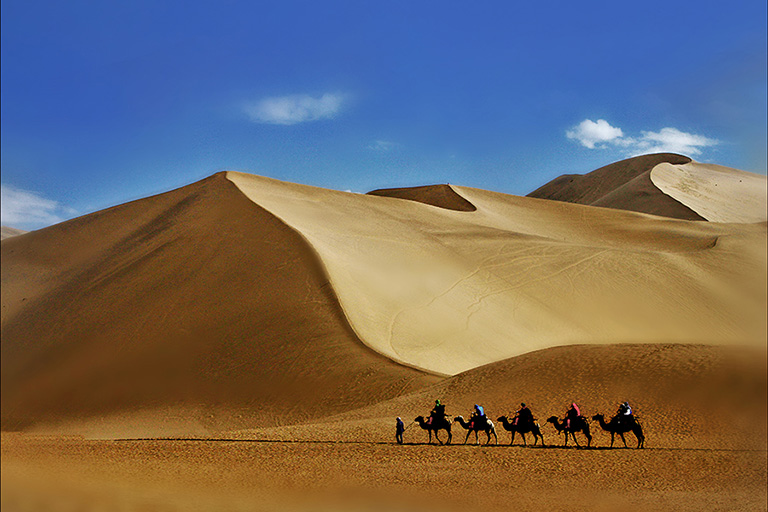
Beijing / Xian / Dunhuang
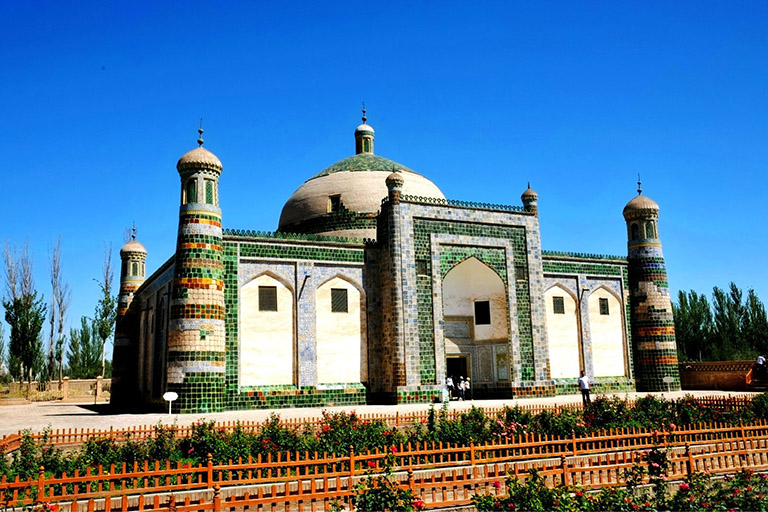
Xian / Dunhuang / Turpan / Urumqi / Kashgar
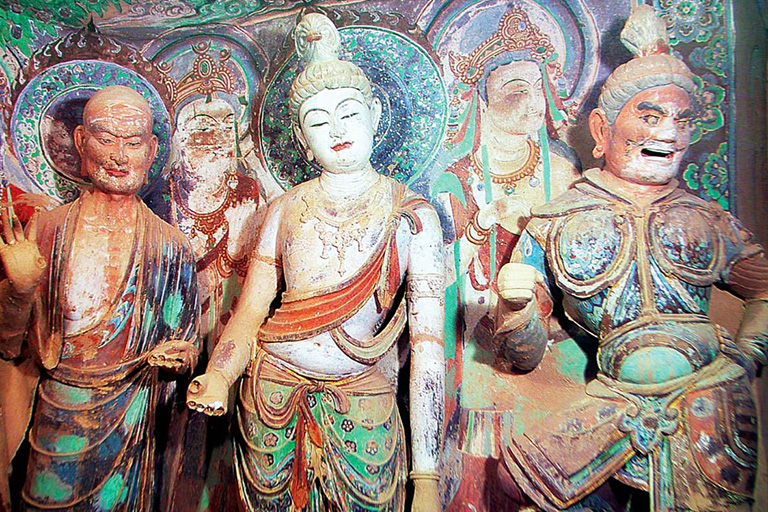
Beijing / Xian / Dunhuang / Turpan / Urumqi